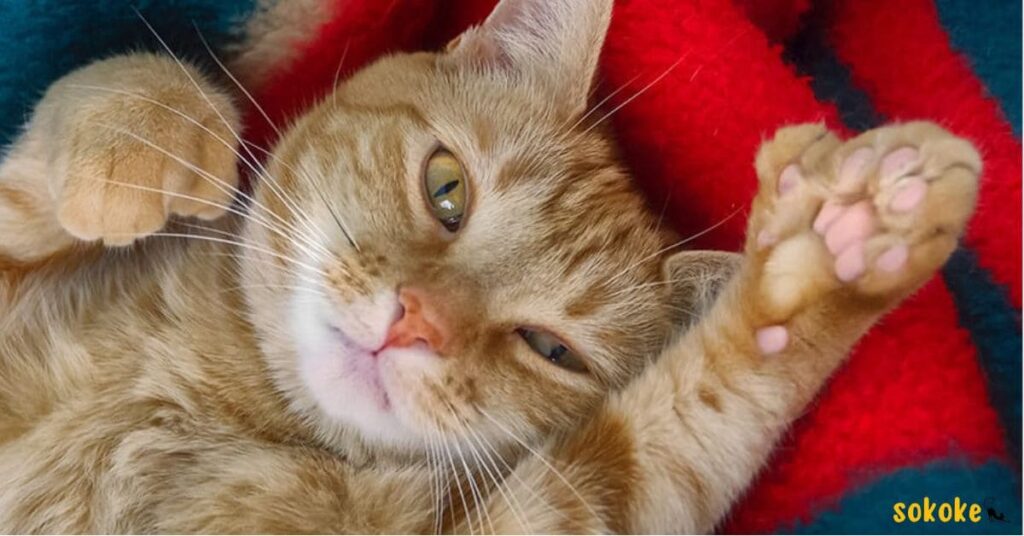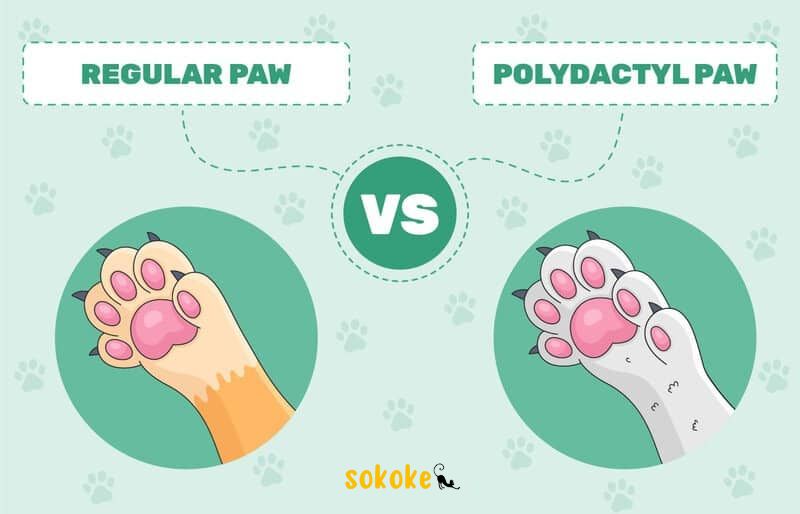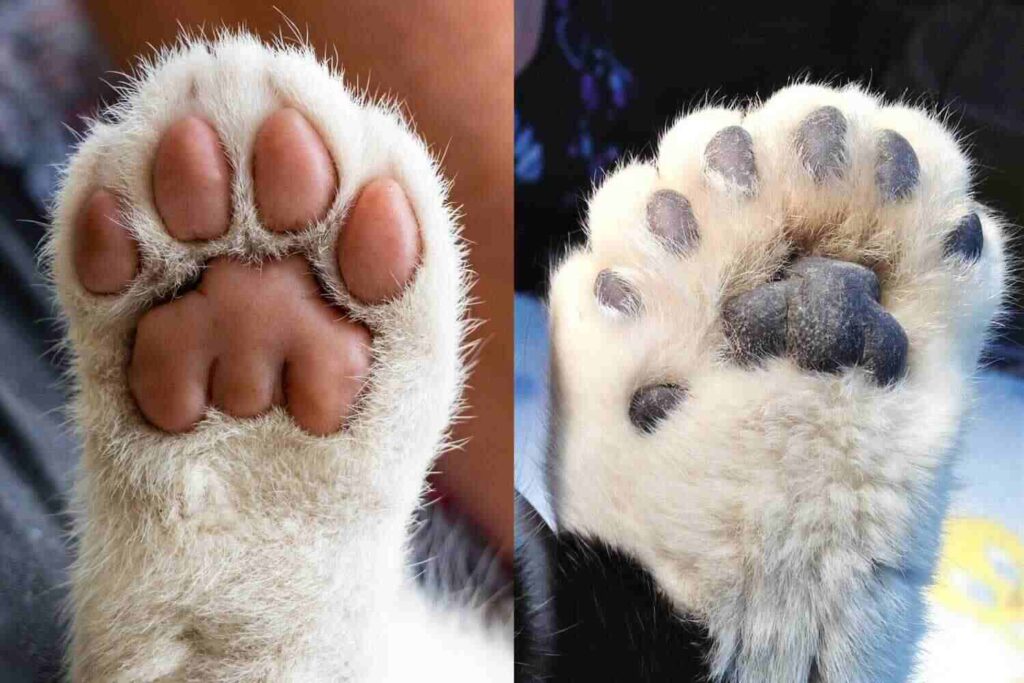
Welcome to our comprehensive guide on feline anatomy! Have you ever pondered the question, “how many toes does a cat have?” In this article, we’ll explore cat toe numbers, genetic variations like polydactyly, and the impact they have on the unique personality of our cats. Whether you’re a curious cat enthusiast or simply seeking to understand more about your whiskered friends, join us as we unravel the mysteries of cat toes and uncover the diversity within the feline world.
Table of Contents
How Many Toes Does A Cat Have?
Have you ever wondered how many toes your furry feline friend has? The average cat has 18 toes, five on each paw and four on each paw. This normal toe count is known as polydactylism, a genetic trait that is quite common in domestic cats. However, not all cats conform to this standard toe count, leading to intriguing variations in toe numbers among different breeds and individual cats.
Basic Cat Paw Anatomy
To understand the intricacies of cat toe numbers, let’s delve into the basic anatomy of a cat’s paw. Each paw consists of pads, claws, and digits. The pads provide cushioning and traction, while the claws serve various purposes such as hunting, climbing, and defense. The digits, or toes, are the fleshy parts connected to the claws and pads.
Cats are digitigrade animals, meaning they walk on their toes rather than the soles of their feet like humans. This unique structure contributes to their agility, balance, and stealth, making them adept hunters and climbers.
Cat Paw Anatomy Overview Table
| Paw Component | Function |
| Pads | Provide cushioning and traction for walking, running, and jumping. |
| Claws | Provide cushioning and traction for walking, running, and jumping. |
| Digits (Toes) | Support the claws and pads, contribute to balance and grip on surfaces. |
Stay tuned for the next section where we explore whether all cats indeed have 18 toes or if there are exceptions to this standard!
Do All Cats Have 18 Toes?
Contrary to popular belief, not all cats have 18 toes. While 18 toes are the norm for most cats, there are exceptions to this rule. Some cats may have fewer toes due to genetic variations or developmental abnormalities. On the other hand, certain cat breeds are known for having extra toes, a condition known as polydactyly.
Do Certain Cat Breeds Have Extra Toes?
Yes, certain cat breeds are more prone to having extra toes than others. One famous example is the Maine Coon, a large and friendly breed known for its polydactylism. Maine Coons can have up to seven toes on each paw, giving them a distinctive and charming appearance.
Other breeds that may exhibit polydactyly include the American Shorthair, Ragdoll, and Hemingway cat (also known as the polydactyl cat). These extra toes can vary in size and shape, sometimes resembling mitten-like formations.
Causes of Differing Toe Numbers
The variation in cat toe numbers can be attributed to genetic factors and mutations. Polydactyly is a hereditary condition caused by a dominant gene mutation. When both parents carry the gene, there’s a higher chance of offspring being polydactyl.
However, not all cats with extra toes have polydactyly. Some may develop additional toes due to developmental anomalies or injuries during kittenhood. These extra toes may not function as efficiently as normal toes but generally do not pose significant health issues.
Factors Influencing Toe Numbers Table
| Factor | Influence on Cat Toe Numbers |
| Genetics | Determines whether a cat will have standard or extra toes. |
| Environment | Developmental factors can lead to variations in toe numbers. |
| Breed | Certain cat breeds are predisposed to polydactyly. |
| Injury or Anomalies | Trauma or abnormalities during kittenhood can affect toe count. |
In the next section, we’ll delve deeper into polydactyl cats and explore the prevalence of this unique trait.
What is Polydactyl Cats?

Polydactyl cats, also known as “Hemingway cats” or “mitten cats,” are felines with more than the usual number of toes on one or more of their paws. The term “polydactyl” comes from the Greek words “poly,” meaning many, and “daktylos,” meaning fingers or toes. This genetic variation results in cats having extra digits, which can manifest in various ways, from a few extra toes to multiple additional digits resembling thumbs.
Is Polydactyly Common in Cats?
Polydactyly is relatively common in cats, particularly in certain breeds and populations. While the standard toe count for cats is 18, polydactyl cats can have up to 22 toes or more, depending on the severity of the condition. This phenomenon has intrigued cat enthusiasts and researchers alike, leading to studies on the genetics and inheritance patterns of polydactylism in felines.
Polydactyly is not limited to domestic cats; it can also occur in wild feline species, although it’s less prevalent. The genetic basis of polydactyly in cats has been studied extensively, shedding light on the underlying mechanisms responsible for this fascinating trait.
Factors Influencing Polydactyly Table
| Factor | Influence on Polydactyly in Cats |
| Genetics | Certain gene mutations lead to polydactyly. |
| Breed | Some cat breeds have a higher prevalence of polydactylism. |
| Heredity | Polydactyly can be passed down from parent cats to offspring. |
| Environmental Factors | Developmental anomalies can also contribute to extra toes. |
In the upcoming section, we’ll explore the extent of extra toes cats can have and discuss whether having additional digits is detrimental to their well-being.
How Many Extra Toes Can Cats Have?
Polydactyl cats can have a wide range of extra toes beyond the typical feline toe count of 18. While most polydactyl cats may have one or two extra toes on each paw, extreme cases can result in cats with up to seven or more toes on a single paw. These additional toes can appear fully formed or as small, rudimentary digits.
The number of extra toes a polydactyl cat has depends on genetic factors and the specific mutation responsible for the polydactyly. Some polydactyl cats may only have extra toes on their front paws, while others may exhibit polydactyly on both front and back paws.
Are Extra Digits Bad for Cats?

Having extra toes, or digits, does not necessarily have negative consequences for cats. In fact, many polydactyl cats lead perfectly healthy and normal lives without any issues related to their extra toes. The additional digits may even provide them with enhanced grip and dexterity, especially in climbing or hunting activities.
However, there are instances where excessively large or misshapen extra toes can cause discomfort or mobility issues for the cat. In such cases, veterinary attention may be required to assess the situation and provide appropriate care.
Polydactyl cats have captured the fascination of cat lovers and historians throughout history, with famous figures like Ernest Hemingway being avid fans of these unique felines. Their distinctive appearance and charming personalities have made them beloved pets in many households.
Variations in Polydactyly Among Cat Breeds
While polydactyly is more commonly associated with certain breeds like Maine Coons and American Shorthairs, it can occur in other breeds as well. For example, the Ragdoll breed, known for its gentle nature and striking blue eyes, may also produce polydactyl kittens.
The prevalence of polydactyly varies among cat populations and regions. In some areas, polydactyl cats are cherished for their unique traits and are even considered lucky or special.
Examples of Polydactyl Cat Breeds Table
| Cat Breed | Characteristics |
| Maine Coon | Large size, friendly demeanor, known for polydactyly. |
| American Shorthair | Versatile breed, may exhibit polydactylism. |
| Ragdoll | Gentle temperament, can produce polydactyl kittens. |
Conclusion (How Many Toes Does A Cat Have?)
In summary, if you’ve ever wondered, “how many toes does a cat have,” most cats typically possess a standard of 18 toes, distributed as five on the front paws and four on the back. However, genetic variations can lead to polydactyly, where certain breeds like Maine Coons and polydactyl cats can have extra toes, ranging from a few to multiple additional digits. While extra toes can offer benefits like improved grip, excessively large or misshapen ones may cause mobility issues, necessitating careful monitoring by cat owners. Polydactyl cats, known for their unique charm, have enamored cat lovers and historical figures like Ernest Hemingway, highlighting the fascinating diversity within the feline world.
The Charm of Polydactyl Cats
Polydactyl cats, with their extra toes and quirky personalities, have become symbols of uniqueness and charm in the feline world. From Hemingway’s literary love for polydactyls to modern-day cat enthusiasts celebrating their diversity, these cats continue to enchant and delight people around the globe.
Famous Polydactyl Cats
- Snowball: Owned by Ernest Hemingway, Snowball was one of the many polydactyl cats at Hemingway’s Key West home.
- Peanut: A social media sensation, Peanut gained fame for his adorable extra toes and playful antics on Instagram.
In addition to their physical uniqueness, polydactyl cats often exhibit friendly and affectionate behaviors, endearing them to families and cat enthusiasts alike.
Frequently Asked Questions (FAQs)
Q: Are polydactyl cats more prone to certain health issues?
Polydactyl cats, in general, are not more prone to specific health issues solely because of their extra toes. However, excessively large or misshapen extra toes can sometimes lead to issues such as mobility challenges or ingrown nails. Regular monitoring of paw health and proper grooming can help mitigate potential problems.
Q: Can polydactylism be passed down to kittens?
Yes, polydactylism is a hereditary trait that can be passed down from parent cats to their offspring. If both parent cats carry the polydactyl gene, there’s a higher likelihood of their kittens being polydactyl as well.
Q: Do all polydactyl cats have the same number of extra toes?
No, the number of extra toes can vary significantly among polydactyl cats. Some may have just one or two extra toes, while others may exhibit more extreme cases with multiple extra digits on a single paw.
Q: Are there any famous polydactyl cats in history?
Yes, there are several famous polydactyl cats in history. One notable example is Snowball, a polydactyl cat owned by author Ernest Hemingway. Hemingway was so fond of polydactyl cats that he had a colony of them at his home in Key West, Florida, which has since become a popular tourist attraction known as the Hemingway Home and Museum.
Q: Can polydactyl cats participate in cat shows or competitions?
Polydactyl cats can participate in cat shows and competitions like any other cats. However, their extra toes are considered a breed deviation in certain cat registries, so they may not be eligible for certain breed-specific categories. Nonetheless, polydactyl cats are valued for their unique traits and charming personalities.
